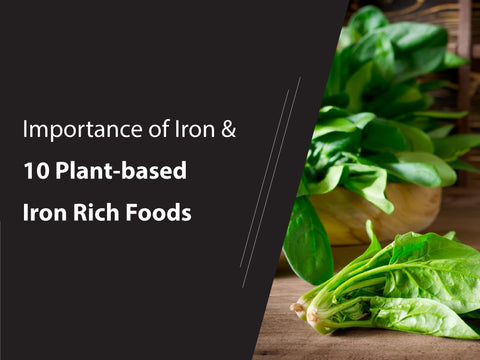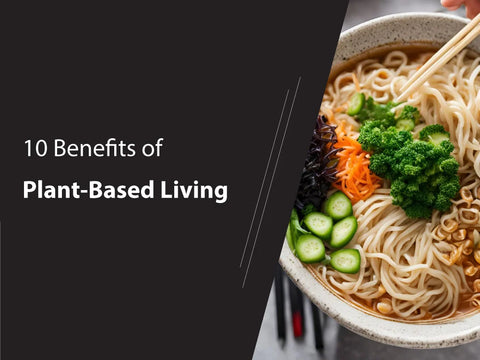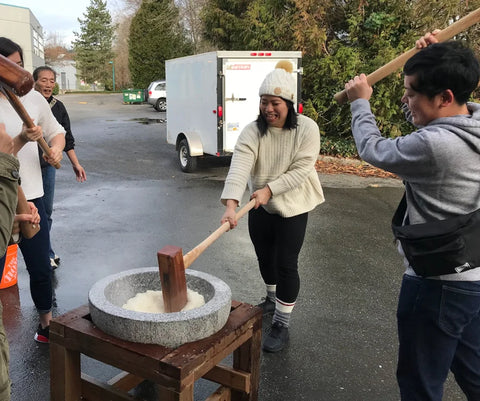The importance of iron in our body could be even more vital than we expected!
Iron is important in the body because it is a key to forming hemoglobin, transporting oxygen, and boosting energy production.
In this article, we'll cover the importance of iron, reveal iron-rich foods, and discuss how to avoid iron deficiency.
Ready to unlock the secret to better health?
Key takeaways:
- Understanding iron's vital functions
- Identifying iron-rich foods
- Learning about iron deficiency symptoms.
What are Iron’s Vital Functions in the Body?
Iron is a star player in making hemoglobin with the help of ferritin protein.
Ferritin comes into play by storing excess iron and regulating its release, ensuring that the body has a steady supply for hemoglobin production and maintaining overall health.

1- The Oxygen Lifeline:
Imagine your body as a very busy city.
Iron acts as the tireless taxi driver, transporting oxygen (the city's lifeblood) through the bloodstream via hemoglobin, a protein found in red blood cells.
Without sufficient iron, oxygen delivery gets disrupted, leading to a condition called iron deficiency anemia.
This translates to a range of symptoms, including fatigue, weakness,shortness of breath, and pale skin, hindering your energy levels and overall well-being.
2- Beyond Oxygen Delivery:
Iron's importance extends far beyond just oxygen transport.
It's a crucial component of several enzymes involved in energy metabolism, impacting your ability to function throughout the day.
Iron also plays a role in muscle function, impacting strength and endurance, and supports a healthy immune system, helping your body fight off infections.
3- Iron and Longevity:
Recent studies suggest a potential link between healthy iron levels and a longer lifespan.
Research from the University of Edinburgh found a connection between genes regulating iron metabolism and healthy aging.
The study suggests that maintaining iron levels within a healthy range might be key to promoting a longer healthspan, meaning the number of years you live free from chronic diseases.
In a nut shell, iron is vital for keeping our blood, energy, and defenses strong.
Let's make sure we eat plenty of iron-rich foods to keep our bodies happy and healthy!
Symptoms of Iron Deficiency
When your body lacks iron, it tells you. You might feel tired, look pale, or get sick more often. These are common signs of low iron levels.
What happens when you don't have enough iron?
Your body struggles to make hemoglobin. That's the stuff in red blood cells that carries oxygen.
Without enough iron, your body can't get the oxygen it needs.
You might feel weak or out of breath. Kids and grown-ups need iron to stay healthy. But sometimes, we don't get enough from food.
This can lead to iron deficiency anemia. It means your blood doesn't have enough healthy red blood cells.
Iron helps fight germs, too. Not enough iron, and your immune system might not work right. This could mean you get sick more often.
If you don't deal with low iron, it can cause problems.
Your heart has to work harder. You might have trouble focusing.
Over time, this can affect your health big time. To keep your iron levels up, eat foods high in iron.
Think spinach, beans, and meats. And remember, vitamin C helps your body take in iron.
So, have some orange juice with your iron-rich meal! If you're worried about your iron, talk to a doctor.
They can tell you if you need iron pills or other help to get your levels right.
Daily Iron Requirements and Recommendations
What is the recommended daily iron intake for different age groups, genders, and health conditions?
| Age / Status | Gender | Iron (mg/day) |
|---|---|---|
| Babies (7-12 months) | Unisex | 11 |
| Kids (4-8 years) | Unisex | 10 |
| Children (9-13 years) | Unisex | 8 |
| Teenagers | Boys | 11 |
| Teenagers | Girls | 15 |
| Adults | Men and Postmenopausal Women | 8 |
| Adults | Menstruating Women | 18 |
| Pregnant Women | Women | 27 |
The amount of iron you need each day depends on your age, gender, and overall health. Babies from 7 to 12 months require 11 milligrams (mg) daily.
Kids aged 4-8 years need 10 mg, while older children from 9-13 years need 8 mg. Teen boys should get 11 mg and teen girls 15 mg due to menstruation.
Adult men and postmenopausal women need only 8 mg, but menstruating women should aim for 18 mg.
Pregnant women have the highest requirement at 27 mg daily.
How can these requirements be met through diet and supplementation?
Eating a variety of iron-rich foods is the best way to meet your needs.
For animal-based sources, lean meats, poultry, and seafood are excellent choices.
Plant-based options include beans, lentils, tofu, and dark leafy greens.
Pairing these with vitamin C-rich foods like oranges or bell peppers can boost iron absorption.
For those who need it, iron supplements are available.
However, they should only be used under a healthcare provider's guidance to avoid iron overload.
Regular blood tests can help monitor iron levels, especially in individuals at risk of deficiency or overload.
Remember, balance is key to maintaining healthy iron levels in the body.
How Does Iron Absorption Work: Enhancing and Inhibiting Factors?
It's all about how our bodies take in iron. Let's get to the heart of how to make the most of iron from our meals.
Maximizing Iron Absorption:
While plant-based foods offer a wealth of iron, maximizing its absorption is key. Here are some tips:
-
Pair iron-rich foods with Vitamin C:
Vitamin C enhances the absorption of iron from plant-based sources. Some compounds in food, like phytates found in grains and legumes, can make it harder for us to absorb iron. These are called blockers. Most of the time, a simple fix is to soak, sprout, or ferment these foods before eating. For example, Natto is a staple in Japan, fermented soy beans. Fermented food like these can lower phytate levels and up iron absorption. Pairing iron-rich foods with vitamin C-rich ones is a winning combo! Include a source of vitamin C, like citrus fruits, tomatoes, or bell peppers, when consuming iron-rich plant foods
-
Limit coffee and tea:
These beverages can inhibit iron absorption. Aim to space out your coffee or tea consumption from iron-rich meals by at least an hour
-
Cook in cast iron cookware:
Cooking in cast iron cookware can add a small amount of iron to your food.
Iron-Rich Foods Our Body Needs
Iron-rich foods can help us to get iron we need to our body.
There are two kinds of iron that we can get from plant-based sources and animal products.
Let's talk about where to find iron in our diets.
Which plant-based foods are rich in iron?
Non-heme iron is found in plant based foods that we can get amount of iron we need.
While meat is often considered the primary source of iron, a well-planned plant-based diet can provide all the iron you need.
Here are some iron-rich plant-based superstars:
- Legumes: Lentils, beans, chickpeas, and peas are packed with iron. For example, a cup of cooked lentils boasts nearly 7mg of iron
- Fortified Foods: Many breakfast cereals, plant-based milks, and tofu products are fortified with iron, making them a convenient way to boost your intake.
- Dark Leafy Greens: Spinach, kale, and collard greens offer a good amount of iron, with a cup of cooked spinach providing about 6mg.
- Nuts and Seeds: Pumpkin seeds, cashews, and sunflower seeds are good sources of plant-based iron. However, the iron in nuts and seeds is less readily absorbed by the body than heme iron found in meat.
- Dried Fruits: Raisins, prunes, and dried apricots offer a delicious way to increase iron intake, but be mindful of portion sizes due to their concentrated sugar content.
When The Plant Based Workshop was developing our shelf stable Ramen noodles, it was imperative that we try to keep all the nutrients intact in the dehydration process.
Check out full benefits of dehydrated noodles on our article.
Our noodles are iron rich, with 5mg of iron, approximately 35% of your daily intake! Try our restaurant-quality plant-based ramen noodles here!
These original ramen noodles and spinach-kale ramen noodles are a game-changer for anyone looking to up their iron game in a tasty, convenient way.
They slide right into a balanced diet, giving you a boost without the hassle.

So, whether you're a meat-lover, vegetarian, or just a fan of noodles, there are plenty of ways to ensure you're getting enough iron.
Keep your meals diverse and don't be afraid to try new iron-rich foods to keep your body in tip-top shape.
The list of 10 plant-based iron rich foods
- Spinach
- Sweet potatoes
- Lentils
- Broccoli
- Nuts
- Beet greens
- Dandelion greens
- Collards
- Kale
- Chard
What are the animal-based sources of iron?
Well, heme iron, which is easily absorbed by our bodies, comes from animal products.
Think red meats like beef and lamb, seafood, and poultry. These foods are powerhouses when it comes to boosting your iron levels.
Summary: Iron is Vital for your Body to Function?
Iron is a star player in making hemoglobin with the help of ferritin protein. Ferritin comes into play by storing excess iron and regulating its release, ensuring that the body has a steady supply for hemoglobin production and maintaining overall health.
Hemoglobin is a part of red blood cells. It carries oxygen from our lungs to the rest of our body. Without enough iron, our body can't make enough healthy oxygen-carrying red blood cells. This means tissues and organs won't get the oxygen they need to work well.
Iron is a key part of enzymes that help our cells make energy. Without iron, we can feel tired, weak, and unable to focus. It's like trying to run a car without enough fuel.
In a nut shell, iron is vital for keeping our blood, energy, and defenses strong. Let's make sure we eat plenty of iron-rich foods to keep our bodies happy and healthy.
For iron rich noodles, please purchase The Plant Based Workshop noodles here.



Comments (0)
There are no comments for this article. Be the first one to leave a message!